An Overview of Medieval Sword Types and Their Uses
Medieval swords were made of steel and came in a variety of designs, such as short swords, longswords, and bastard swords. All had unique characteristics that suited their intended use; for example, short swords are lightweight and easy to wield making them ideal for quick strikes. Longswords are heavier weapons often preferred for defense or parrying but can also be used offensively due to their length. Bastard swords (hand-and-a-half Swords) are larger than either type of medieval sword and were designed with thrusting capabilities as well as heavy striking blows in mind. Regardless of the design, all Medieval swords were reliable and deadly weapons meant for use on battlefields
Medieval swords have become an important part of history and been utilized by many cultures over the centuries. Reenactment groups today often use these swords as part of their performance, in order to stay true to the period they are trying to depict. These swords have an interesting background with several variations that serve different purposes.
The popularity of medieval swords for reenactment has been on the rise in recent years, with more and more individuals interested in learning about medieval swords and their varied purposes. Historically speaking, these weapons were symbols of power and strength - something which continues to fascinate people today.
Different Types of Medieval Swords
Longsword
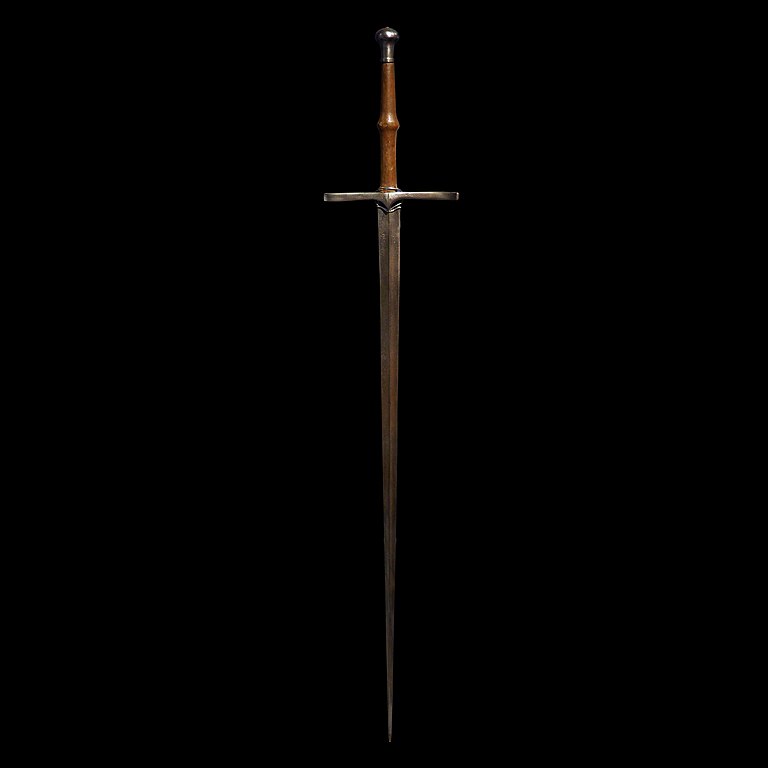
The longsword is a two-handed sword and the most popular sword used in reenactment. It has a long blade with a narrow cross-section. This all-purpose weapon is popular with reenactors for to its versatility and power. The longsword was primarily used in the 13th and 14th centuries, and was known for its cutting, thrusting and even throwing abilities. It is a great choice for use in combat as well as providing defense from longer-ranged attacks.
Advantages
- longer reach
- increased power
- increased accuracy
Disadvantages
- difficulty of learning proper technique
- need for greater strength
- vulnerability to being broken
Arming sword

The arming sword, or knightly sword, was a widely used weapon among medieval soldiers. Its design and intended use allowed for the utilization of one or two hands during combat-oriented activities. This made it a suitable choice for both defensive and offensive warfare, as well as providing users with exceptional maneuverability and thrusting capabilities. Furthermore, its balance, strength and agility made it a dependable option for knights seeking to equip themselves for battle.
Advantages
- lightweight design
- well-suited for mounted combat
- maneuverability
Disadvantages
- it lacked the power of other heavier swords
- shorter reach
Broadsword
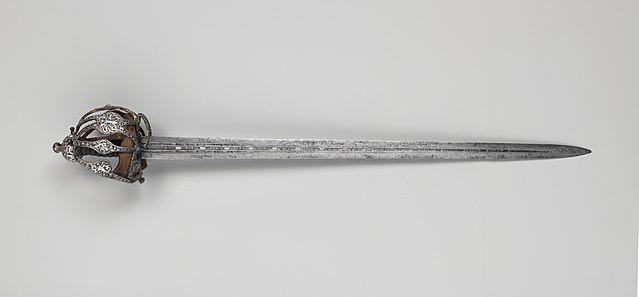
The broadsword or basket-hilted sword is a type of medieval sword that was commonly used during the Middle Ages. It featured a double-edged blade that was broad and thick, making it an effective weapon against heavily armored opponents. As a result, it was popular among knightly warriors and foot soldiers alike. The broadsword saw widespread use in Europe, Africa, and the Middle East throughout the 13th and 14th centuries. Its versatility made it a useful tool for both offensive and defensive combat situations; due to its strength it could easily cleave through armor plates.
Advantages
- great strength
- ability to penetrate armor
- versatile
Disadvantages
- size
- weight
*This post may contain affiliate links. I receive a small amount of compensation when you purchase from my links at no additional cost to you.
Billhook
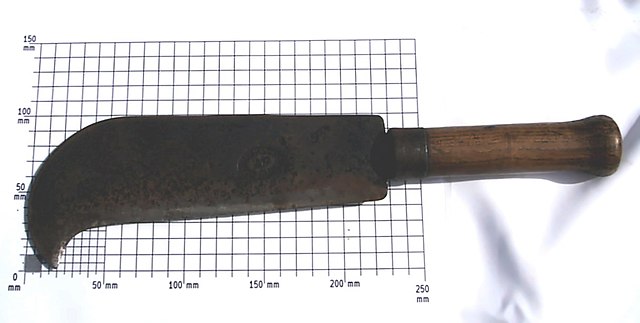
The billhook was a type of sword that enjoyed widespread use during the medieval period. It featured a curved blade, which had one cutting edge, and was used for offensive and defensive purposes against other swords. This weapon was primarily utilized in close quarters combat, typically by peasants- an audience who would likely be more familiar with this style of fighting than others. The billhook was a versatile and powerful weapon during its time, but it had some disadvantages. The curved blade made it difficult to thrusting, and the weapon wasn't very effective when fighting at long range. Despite these limitations, the billhook is still popular for reenactment due to its many advantages such as being able to parry and defend against strikes.
Advantages
- ability to parry and defend against strikes
- could be used as an axe
Disadvantages
- not as powerful as other swords
- limited thrusting ability
Sabre
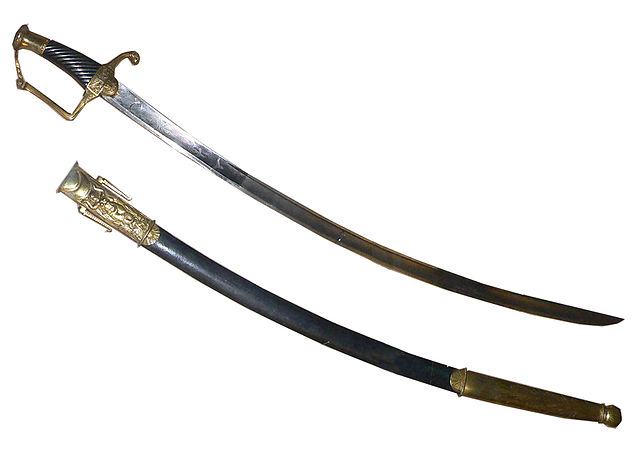
The saber has been around for centuries and is still popular today among enthusiasts of stage combat and reenactment. It was primarily used by mounted troops during the medieval period, due to its lightweight design and cutting ability. This sword became popular for its speed and agility as well as its ability to slash through both armored opponents (during the medieval period) and unarmored opponents (into the 19th century). The saber remains an interesting topic even today due to its popularity among enthusiasts and historians alike.
Advantages
- one-handed use
- lightweight
- speed
- agility
Disadvantages
- unsuitable for thrusting attacks
- limited reach
Rapier
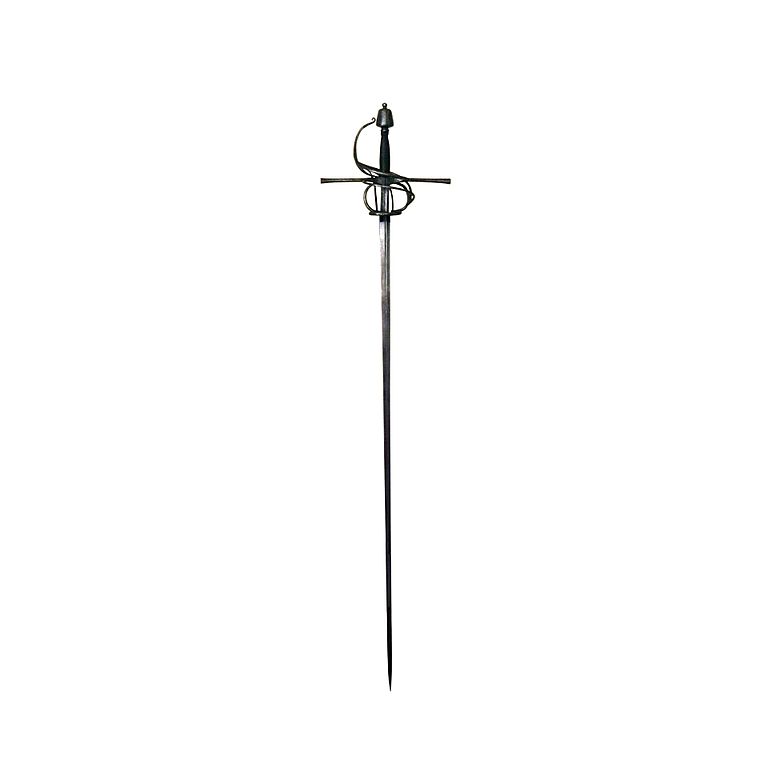
The rapier was a popular sword type during the Middle Ages and continues to be used in reenactment today. It was a heavier sword, typically longer than other swords of the time, and was frequently used in duels. The rapier was known for its exceptional cutting and thrusting capabilities, allowing for quick and precise attacks and parries. Additionally, it had a longer reach, allowing for engagement of the opponent from a greater distance. However, due to its weight and length, it was not as well-suited for use in confined spaces. The rapier was most popular during the 16th and 17th centuries and was used by many Musketeers and other duelists of the period. Its popularity during these centuries make it an important historical weapon and its continued use in reenactment highlights its significance and versatility.
Advantages
- longer reach
- excellent cutting and thrusting capabilities
Disadvantages
- low effectiveness against heavily armored opponents
- lack of versatility in some situations
Falchion

The Falchion is a one-handed, single-edged sword that was commonly used during the medieval period, particularly during the 11th and 12th centuries. It has a curved blade that usually has a blunt or rounded tip and is wider near the tip than the hilt. The falchion was primarily used for cutting and slashing and was often the preferred weapon of knights and foot soldiers due to its speed and its ability to penetrate armor. Its curvature allowed for efficient cutting through flesh and bone. The Falchion was used as a weapon for both defense and offense, and also for ceremonial occasions. It played an important role in medieval warfare and remained popular until the end of the 15th century. Its historical significance and versatility make it a valuable weapon to study and appreciate today.
Advantages
- relatively light
- well-balanced
Disadvantages
- lack of piercing power
- inability to effectively parry attacks
Dagger
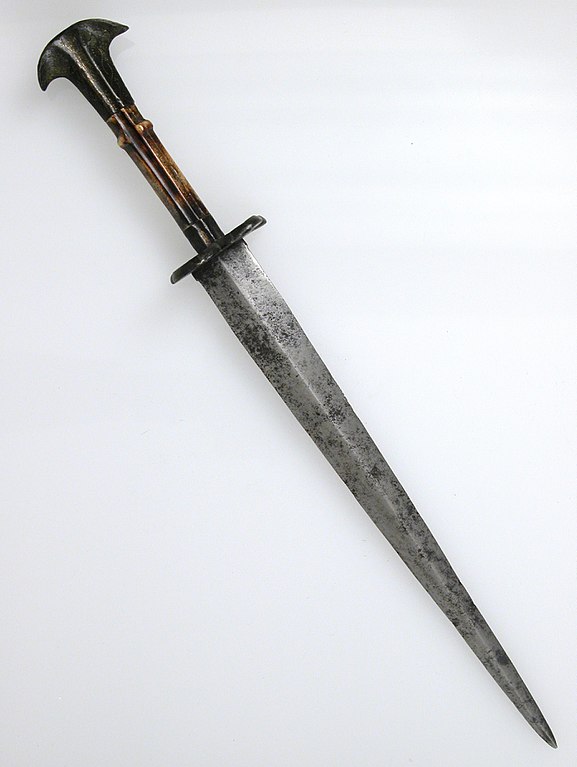
The dagger was a popular weapon during the Medieval period, and continues to be used for reenactment purposes in modern times. It is a short, double-edged blade typically ranging from 6-12 inches in length, most commonly used for thrusting and stabbing. Daggers provided a versatile, lightweight alternative to more cumbersome sword types and were favored by many warriors due to their light weight and maneuverability. The dagger was particularly effective against heavily armored foes, as its size and shape allowed for it to be thrust through gaps in armor. This feature allowed dagger-wielding fighters to be more effective against armored opponents, even when using a smaller weapon. This versatility and effectiveness made it a popular weapon among soldiers in the Middle Ages, and it still continues to be valued for its historical significance and practicality in modern times.
Advantages
- lightweight
- versatile
- maneuverability
Disadvantages
- less effective against larger opponents
- lacks the reach and power
How to Select a Sword
Consider Your Height and Strength
When it comes to reenactment, choosing the right sword is crucial. In order to choose a sword that is the most effective for you, it is crucial to consider your height and strength. Don't forget to consider your own sense of style! Make careful to choose a weapon that suits your preferences and one you feel at ease using. Finding the ideal fit in terms of both appearance and fashion is key. So, before choosing a choice, take your time and consider several choices.
Finding the ideal fit for your body type is key when choosing the best sword for you. Consider longer weapons like a longsword, arming sword, or broadsword if you are taller and stronger. For those who can manage the weight and length of the blade, these are fantastic solutions. The sabre, dagger, or rapier are examples of shorter swords that you might wish to consider if you're shorter and lighter. These choices are smaller and lighter and easier to handle.
Anyone of any size or strength can utilize the falchion. It doesn't take much force to use, and its curved blade is ideal for chopping and slicing. It's a flexible choice that works for a variety of fighting styles and body types.
Choose the Right Sword for Your Intentions
With so many variations available, choose the best sword for your reenactment needs can be difficult. It's crucial to take your intentions and tastes into account because every sword has a unique mix of benefits and drawbacks. With its long blade and crossguard, the longsword is ideal for cutting and thrusting motions. The one-handed arming sword is the ideal weapon for close combat. A two-handed sword with a broad blade for destructive slashing assaults, the broadsword. Sabres are curved swords that are excellent for both cutting and thrusting. A short-bladed weapon with a pointed tip, the dagger is ideal for close-quarters combat. The rapier is an excellent self-defense tool because of its thin blade and thrusting action. The falchion is a single-edged, curved blade that is ideal for cutting and slicing. With so many alternatives available, it's crucial to pick the sword that best suits your interests and purposes.
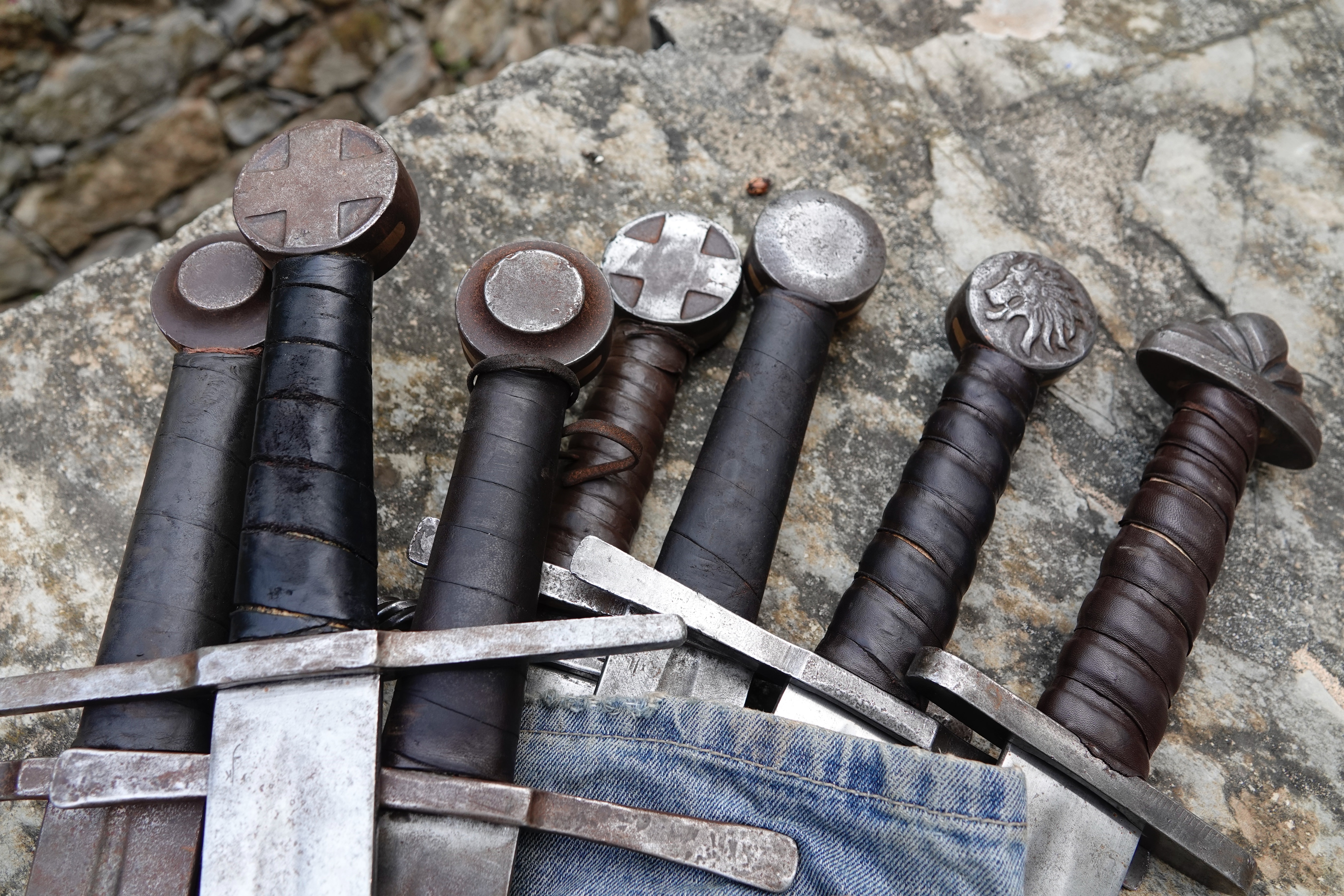
Consider the Quality
When it comes to selecting the perfect sword for a reenactment, it's all about the quality of the weapon. The best swords are often made of high-carbon steel that has been precisely hardened to a tempering point. Even the greatest quality swords will need routine upkeep and care to stay in top shape, though.
It's important to think about the kind of blade you're using as well. The advantages of weight, balance, and reach vary amongst longswords, rapiers, and sabres. To make a wise choice, one must be aware of the advantages and disadvantages of each style of blade.
Your high-quality sword will serve you faithfully for many years if you take good care of it, perform routine maintenance, and make the right choice. Take your time and do your research since it will greatly impact your reenactment experience.
Get the Right Weight and Balance
When selecting a sword for reenactment, weight and balance are two of the most important things to consider. A well-balanced sword makes it easy to swing and thrust without getting too tired, while a heavier one can pack a punch. The weight and balance will depend on the type of sword, so it's important to think about what kind of sword is best for the task at hand.
Long swords, like the rapier and saber, tend to be heavier than short swords like the falchion. They require more power to swing and more strength in the arms and shoulders. But, they also give you better reach and more force behind every cut, which makes them great for larger opponents. Short swords, on the other hand, are more manageable in close quarters and may be better for smaller battles.
It's up to the individual to decide which type of sword works best for them. But no matter which one you choose, it's important to think about weight and balance to make sure you get the best performance. So, try different options before making a decision and make sure it feels comfortable for you to wield and that fits your preferences.
The Cost of Medieval Swords for Reenactment
When it comes to buying a sword for reenactment, it's important to remember that it's a significant investment. The cost of a sword can vary greatly depending on the type, condition, and authenticity. Authentic medieval swords for reenactment can range in price from $50 to $3000, with some rarer swords costing even more. The most expensive swords are usually of the highest quality and have been replicated from the original designs of ancient blades.
The cost ultimately depends on the buyer, and it's important to consider the price, quality, and authenticity of the sword before making a decision. The most important thing is to get a sword that you feel comfortable with, that fits your reenactment needs and that you feel proud to wield.
Be Aware of Maintenance Costs
If you're thinking about buying a medieval sword for reenactment, it's important to keep in mind the costs of basic maintenance. Your sword is a priceless possession that requires regular maintenance to keep it in good shape.
To prevent rust, it's crucial to frequently clean your sword using the proper solution. To avoid damage, the blade should also be oiled. Examine the hilt and handle, and replace them if necessary. Additionally, regular sharpening will guarantee that the blade is in excellent shape.
It's crucial to plan ahead and budget appropriately because the price of these routine maintenance items can increase over time. Your sword will endure a long time if you take good care of it, and you'll be able to use it for many years to come.
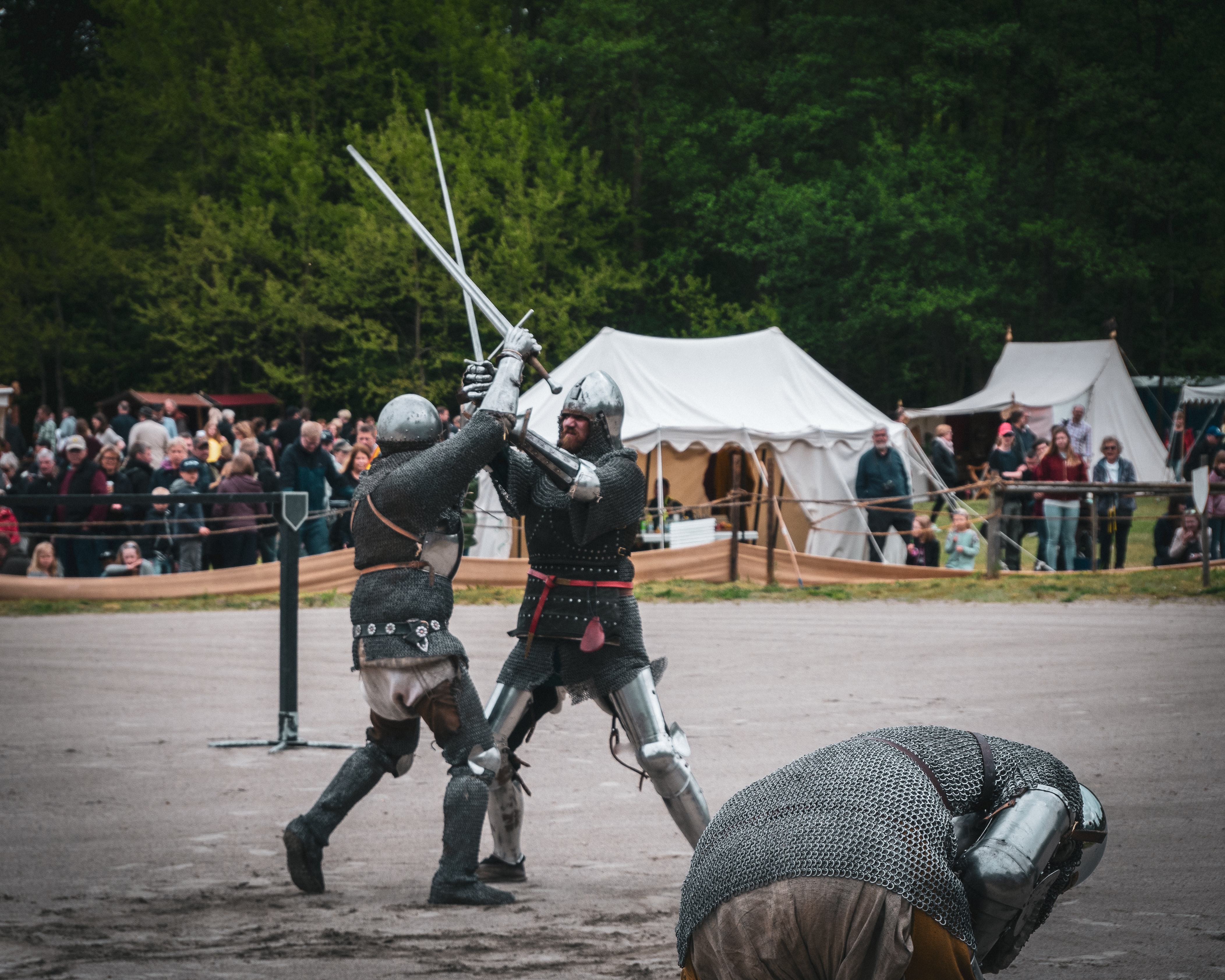
Conclusion
Medieval swords were used for a variety of purposes, from hunting to warfare. The longsword was one of the most widely used swords during the medieval period. It was a double-edged weapon that could be wielded with one or two hands. The longsword was used to thrust and slash and was particularly effective when used in combination with a shield.
The rapier, a slim, straight sword, and the falchion, a broad-bladed, slightly curved sword, were both popular forms of swords during this time period. Depending on the user's desire and fighting style, each of these swords could be utilized in a variety of ways and had certain advantages and disadvantages in combat.
It's critical to comprehend the historical background and development of these weapons and to keep in mind that swords served ceremonial and symbolic functions in addition to being employed in battle. It's fascinating to study about and admire the variety of swords that existed during the medieval era. Each blade type was created to meet a certain requirement.
